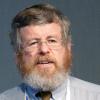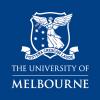Research leader
Research team
End User representatives
This project was commissioned and funded entirely by the Department of Environment, Land, Water and Planning, Victoria.
Smoke impacts on regional and urban air quality and associated impacts on population health is becoming a substantial issue for land and fire management authorities around the world. There is an increasing challenge to balance the risks of bushfire to infrastructure, property and population due to fuel accumulation against the risk to air quality and health caused by smoke emission from fuel reduction and other prescribed burning programs. In some jurisdictions, mandated fire management is in direct conflict with air quality regulations. This is particularly the case for Victoria.
Currently, Australian fire and land management agencies are not well equipped to assess the potential impacts of planned prescribed burning events, or to develop detailed regional strategies for prescribed burning to minimise regional air quality impacts. Although smoke transport and smoke emissions models have been developed for both research applications, with reasonable success, implementing these models in a framework suitable for tactical and strategic planning is generally regionally specific.
Smoke emissions models require detailed knowledge of fuel loads and dynamics, combustion processes and emission rates, and fire spread. Of the many areas of uncertainty affecting smoke emission estimates, two are prominent:
- the mass and distribution of coarse, heavy, shrub and bark fuels in woodlands and forests, their combustion characteristics, particularly with respect to fire intensity and fuel moisture content; and
- the emission rates of many of the smoke constituents, particularly particulate matter (PM) and the reactive organic species, and their variability with respect to combustion rate.
This project developed a modelling framework optimised for Victoria, but based on standard models and protocols and building on operational systems previously developed by the Centre for Australian Weather and Climate Research (CAWCR), and research programs currently in development by CAWCR, CES and the university collaborators. This involved several steps:
- development of the model framework
- compilation of the input data required for fire emissions estimation in Victoria
- assessing the accuracy of predictions of smoke emissions, fire intensity and regional smoke impacts against observed surface and satellite sensed data
- addressing known knowledge gaps, specifically the processes determining emission factors for key smoke constituents and technqiues for direct measurement of fire radiative power
- developing training materials and delivering training to DSE personnel in smoke management science, including factors influencing smoke emissions, and the prediction and monitoring of smoke using the modelling framework.













